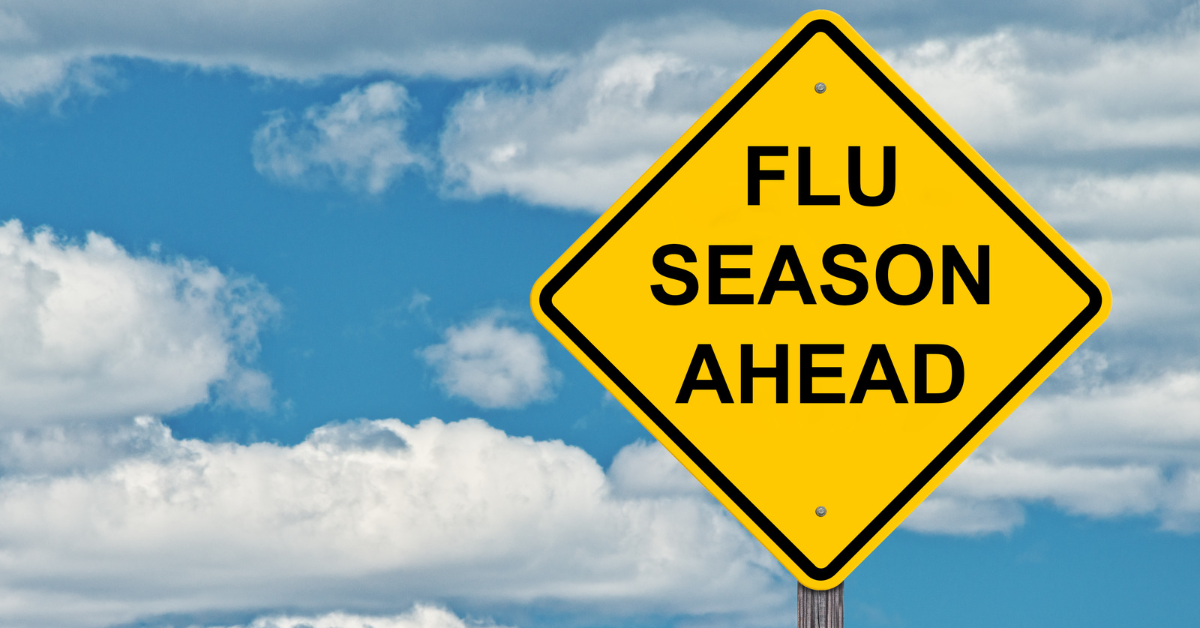
The flu is never fun. But if you live with type 2 diabetes, it can be even worse. Here's how to manage your diabetes when you have the flu.
Flu season is upon us. The weather is changing. We’re spending more time inside. And along with all this comes a higher risk of getting the flu.
Flu season is the time of year when we’re told to take extra care of our health. And when you're living with type 2 diabetes this is doubly important.
People with diabetes are at high risk of experiencing serious flu complications. These can include pneumonia, bronchitis, sinus infections, and ear infections. When they get serious enough these complications can require a hospital visit or stay for treatment. At its very worst, flu (a.k.a. influenza) can be deadly.
Take Care of Your Type 2 Diabetes During Flu Season
When you’re new to type 2 diabetes staying healthy during flu season might involve a few things you haven’t thought about in the past.
The overarching thing to remember is that even when you’re not feeling well you still have to actively manage your diabetes. Check your blood glucose levels regularly. Take your medications. Be mindful of what you eat. Do all this along with getting rest, drinking liquids, checking for fever, and treating your symptoms.
Ignoring your diabetes while dealing with the flu will only make things worse. You might end up experiencing extremely high or low blood glucose levels. Either way, having diabetes makes it harder for your body to fight off the flu and puts you at risk of serious diabetes symptoms and complications.
How to Avoid Getting the Flu
The best thing you can do for your health is to avoid getting the flu in the first place. While there’s no guarantee that you will avoid getting the flu, there are a couple of things you can do to improve your odds dramatically.
- Get a flu shot every year. The flu virus is constantly changing, so each year the shot given changes to protect you from the flu virus strains that are currently circulating.
- Wear a face mask when you’re in a crowd. The flu virus spreads through droplets in the air. The droplets come from coughs, sneezes, and even just talking. A mask will block many of these droplets from getting into your nose and mouth, offering you some protection from infection.
- Wash your hands regularly. Washing your hands with soap or an alcohol-based skin cleaner will help clear any virus droplets from your skin.
- Avoid touching your eyes, nose, and mouth. Your eyes, nose, and mouth give viruses an opening to enter your body with infection.
What to Do if You Do Get the Flu
The standard advice for what to do when you get the flu still applies.
You want to:
- Get some rest
- Drink liquids to stay hydrated
- Treat the symptoms with over-the-counter medicines
For people with diabetes, it’s important to also do the following.
Avoid OTC medications with sugar or caffeine in them.
Not all OTC (over-the-counter) medicines are diabetes-friendly. Some can drive your glucose levels up. If you’re not sure whether a cough syrup, throat lozenge, fever reducer, cold medicine, etc. is diabetes-friendly, ask the pharmacist or your doctor for a recommendation.
Keep taking your diabetes medications.
You want to maintain good glucose management even when you’re sick. Just being sick can drive your glucose readings up because your body is releasing glucose and stress hormones to fight off the virus. Talk with your doctor before making any changes to your diabetes medication routine.
Check your BG more often.
Being sick (and sometimes flu medicines) can affect your glucose levels. It might not be obvious if feeling lightheaded is being caused by the flu or your glucose levels. The only way to know is to check and check often.
Talk to your doctor if you have serious symptoms like vomiting or diarrhea.
Vomiting and diarrhea can lead to dehydration and not getting enough calories or nutrition. And these can lead your health into a downward spiral.
Talk to your doctor at the first sign of any breathing difficulties.
Breathing difficulties can lead to pneumonia or bronchitis. And if left unaddressed can require hospitalization.
Managing the Flu and Diabetes, You’ll Have to Do Both
Diabetes never takes a break. That means that if you do get the flu, you’ll have to actively manage both at the same time. The potential results are just too serious to take the flu lightly. Reach out to your doctor or pharmacist if you get to the point where you’re not sure what you need to do. They’ll be there to help you sort it out.

